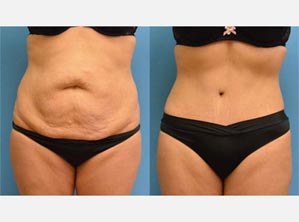“High tech” hype
It sometimes seems that every week the public is exposed to a new technology promising a breakthrough in a particular area. While significant advances come much less frequently, the majority of “innovations” do not live up to their promise. The appetite for new technology in the field of cosmetic surgery is insatiable and both the media and the public fan the hype.
Breast implant innovation
A rather “low tech” innovation in silicone breast implant surgery has proven quite helpful and may yet show longer term promise for women with silicone breast implants.
The Keller Funnel is an ingenious yet simple device conceived by Dr. Kevin Keller, a plastic surgeon in SC and first introduced to the market in 2009. The concept of the funnel comes from the use of a pastry funnel. This clever device is utilized during breast implant surgery to allow easier insertion of the implant through a smaller incision. This minimizes trauma to the implant and to the breast tissues during insertion and as well minimizes handling of the implant. Minimal handling of the implant has long been advocated and touted as a “no touch” technique.
Capsular contracture
Capsular contracture is one of the most difficult and unpredictable problems associated with breast implants for which treatment options may require surgery and recurrence is common. A predominant causal theory is that bacterial or other particulate contamination of the implant during surgery may lead to a higher incidence of contracture. If contamination can be minimized at surgery, this may lead to lower rates of contracture.
“Low tech” shows promise
A recent study in the Aesthetic Surgery Journal (February 2012) seeks to validate the manufacturer’s claims. I have been using the Keller funnel for nearly 2 years and along with many other plastic surgeons have found it to be a great innovation, albeit “low tech”. Time will tell if the claim of lower incidence of contamination leading to potential lower incidence of capsular contracture bears true.

